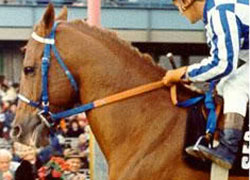Tutorial Menu: Sculpting Necks, Part 1
Article by Laura Skillern, Don't Eat The Paint
Just guessing from the hundreds (of thousands) of customs I’ve seen over my years in the hobby, I’d say necks are the body part customizers struggle with most. And I can understand why as a horse’s neck seems to move like it’s made of rubber. It can stretch, twist, and compress as if it had no bones. Trying to recreate that movement with wire and clay is a unique challenge.
The Unique Anatomy of the Neck
Throughout the rest of the body, the horse’s skeleton sits close to the surface. But even in an emaciated horse, you still can’t clearly see the cervical vertebrae (neck bones).
I mentioned this earlier today on my Facebook page that I’m going to occasionally use photos of emaciated horses to illustrate the skeleton. However, I understand not everyone feels comfortable looking at these kind of photos. Heck, even I don’t like to see surprise abused horses photos--especially when I’m in the office pretending to work and doubly so when I’m trying to eat.
So instead of putting the photos directly into my post, I will link to them and provide a warning that will appear like it this: *WARNING: This link shows an emaciated horse*: This horse was rescued and later rehabilitated.
And here’s an alternate reference of a lean but not starving horse:
Is this cool with everybody? Anyway, back to my point…
So when you are looking at the shape of a horse’s neck, you’re just looking at the squishy parts: muscles, tendons, ligaments, skin, fat, fascia, and fur. Because of all the squish, a horse’s neck appears to lengthen and shorten in different positions.
Under all the squishy parts, the horse’s cervical vertebrae doesn’t actually change length. However, the bones attach to weird spots on the body and head.
The top of the neck attaches at the poll, ie the top of the skull. The bottom of the neck attaches very low on the body--closer to the chest than the withers. The bones form an S-curve, which looks like it's curled up into the neck.
Gender Variations
If all that squishy anatomy didn’t make it hard enough, when you’re sculpting a neck you have to keep things like breed and gender in mind. Testosterone impacts the size of neck, building of a crest on the top of neck. The crest gets more cresty with age. For example:
I don’t want to quite use the term sexy…but I think it’s a good look. It’s distinguished, like the equine equivalent of George Clooney-style salt and pepper.
Mares tend to be more delicate, in some case very elegant and lean:
Yes, two separate Ruffian references in one tutorial.
Geldings usually sit in between depending on how young they were when gelded. The neck is thicker overall than a mare, but lacks the crest of a mature stallion.
Funny Cide in racing condition, (right) Funny Cide in retirement at the Kentucky Horse Park.
Conditioning and Discipline
While gender has an important impact on the shape of the neck, a horse’s discipline (his job) and conditioning can have a great impact on shape as well. Regular light riding doesn’t do much, but sitting and growing fat in a pasture adds blubber to the neck, too.
Racehorse necks (as seen in the above section) are especially lean and straight. Dressage (especially rollkur’d horses) increase the arch and builds up the neck muscles.
Gaming and roping horses can develop the opposite way. Especially at low end rodeos, you will see horse after horse with an over-developed underside of their neck and no muscling on their top line. I consider this a serious fault if seen on a model.
Breed
Now I’m going to finally wrap up with the biggest influence on shape: breed. Gender, conformation, and condition don’t hold a candle to the influence of breed.
As a general rule, thinner necks are more S-shaped and snake-like. Thicker necks look proportionally shorter and show more crest (even on mares and geldings.)
An Arabian, and a Morgan stallion - A Suffolk Punch (below)
Breed also influences head-set. Every horse has a neutral position, but it will be higher and lower on various breeds. Stock horses--western pleasure ones especially--are bred for a super low headset (photo on right, above).
This allows a stock horse to comfortably carry his head lower. Obviously the peanut rollers take this to an uncomfortable extreme, but these horses can carry their head level to their withers without discomfort or severe training. When you compare stock western pleasure to Arabian western pleasure, you’ll notice the Arabs have to arch their necks to achieve a low headset.
It’s not an Arabian’s natural position.
Breeds like the American Saddlebred fall at the very top of the spectrum.
A quarter horse may not be able to physically raise his head as high a position the average ASB considers comfy. When we get into poses next week, keep breed in mind. A horse’s neck will reshape in predictable ways when moved above and below their neutral position, but that can mean very different thing for different breeds.





















